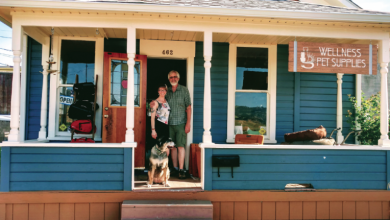Top 10 Mistakes People Make When Raising a Puppy: Part One
When I promised to write this article, I suggested listing the ten most common mistakes dog lovers make with puppies. My list turned into 30 or 40 points and I realized this article will be the starting point of many more conversations.
Hip Dysplasia, vaccinosis, too many prescription drugs, poor bone growth, chronic diarrhea, cruciate ligament tears, obesity, epilepsy, organ failure, autoimmune disease, cancer and premature loss are often the outcomes of well intended deeds and poor advice that people get about puppy care.
I hope the following 10 points serve as a springboard to ignite the engine of learning so you can go deeper and your actions will make a huge, positive difference in the life of the dog you love. Enjoy!
MISTAKE #1: GETTING THE WRONG DOG
Some dog lovers go through a harsh awakening when the food bill for their Great Dane is more than their own or they have to wear earplugs night and day because their dog barks like crazy.
A Border Collie is not a good match for a couch potato, a Chihuahua is not a great avalanche rescue dog, a Chow Chow is not likely to be tolerant with kids, and an Alaskan Malamute is not exactly a dog for Hawaii. Research breeds before you get your puppy. With some exceptions most dogs come with reliable breed characteristics, which makes it easier to match your dog’s traits to your needs and situation.
MISTAKE #2: GETTING YOUR DOG FROM THE WRONG PLACE
Most people are aware that puppy mills are some of the worst, torturous places for dogs. Many who buy a puppy from a pet store or a puppy mill say they “just wanted to rescue the poor puppy” but that only supports the puppy mill machine. The only time you should adopt a puppy mill dog is after a crackdown by local authorities.
Ideally, adopt from a reputable registered rescue organization that aligns with your beliefs and values. Find a breed-specific rescue if you want a specific breed.
MISTAKE #3: KNOW-IT-ALL SYNDROME
Just recently I visited a friend who fostered two puppies. I saw her boyfriend spanking the puppy because it was chewing on his hand and I knew the situation was tricky. If I let him go on spanking the puppy without intervening, I would be letting the poor puppy down.
So as gently as I could, I suggested that placing a toy or a bone in the puppy’s mouth or putting him in a crate for a moment would be effective without the spanking.
“I know how to raise dogs!” my friend replied. “My parents had dogs and we always spanked them and they turned out alright!”
In fact, dogs are not okay when they are physically punished. A dog is much better behaved and happier when we reinforce good behavior and prevent or ignore negative behavior.
Please see next month’s issue for part two.
Written by guest author Dr. Peter Dobias

